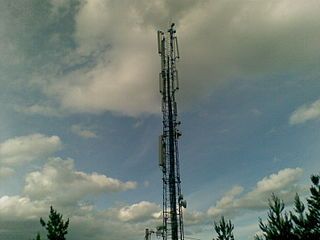Bringing Clean Energy Solutions to Off-Grid Cell Tower Operations
Here are two clean energy ideas that deal with bringing power to cell towers in off-grid locations, where diesel generators are the norm. Before I present them, let’s think about the obvious drawbacks of diesel:
• Needs to be trucked in
• Can be stolen (very common problem in the developing world)
• Carries high maintenance cost of equipment
• Creates pollution
Here’s a company that offers a solution, running the generators at higher load levels and storing the excess power in batteries. They promise huge increases in efficiency, and an ROI in under two years. Personally, I doubt these claims; I need to speak with a few satisfied customers who can corroborate all this.
Another idea, believe it or not, is WindStream. I know I’ve been writing a great deal about them and their “TurboMill” and “SolarMill” (combination of microwind turbines and solar panels) recently. But check out their solution to wind power for cell towers.
Obviously, it’s not the only way to use renewable energy for this application, but here you’re taking advantage of superstructure, i.e., the existing tower height, to get far better wind conditions than are available near the ground. Combining this approach with solar, and adding in battery storage to provide continuous power, is the best way for cell tower operators to save money and reduce their emissions.


There is certainly some merit in running generators at rated capacity and storing the excess power in batteries, however there tend to be high costs associated with using batteries, especially when running deep cycle lead acid batteries in hot climates – this usually necessitates the running of air conditioning and or frequent replacement of the batteries.
Newer types of battery such as Lithium Iron Phosphate and high temperature Sodium Nickel Chloride can often last much longer so permitting lower levelized cost of stored power.
Providing power for remote cell ‘phone towers may be a reasonable application for wind and solar power. I say “may” because it is not totally clear.
Whether the existing towers could be used for wind generators is questionable. Doing so would increase the wind load on the towers, quite possibly beyond what they were designed for. Of course that would not rule out the possibility of making new towers stronger.
PV may be a reasonable option.
Power storage would obviously be necessary because of the intermittent nature of wind and PV power, and it would be necessary to have sufficient storage capacity to last for at least several days. That is absolutely critical because in case of weather or other emergencies, reliable communications is critical.
It may be reasonable to provide back-up power with propane or butane powered generators. The advantage of them over Diesel generators is that the fuel does not degrade with age, so the generators could be on standby for months, or even years, and still start reliably. They could easily be tested by remote control to verify that they are still operational; that has been done with microwave systems for decades. Obviously there would have to be theft protection, but putting the generators into a hardened bunker would greatly help by at least making stealing a generator very time consuming thereby providing sufficient time to respond to an alarm message.
The equipment for cell ‘phones is often air conditioned. Obviously air conditioning would greatly increase the required power. Rather than use air conditioning, it may be possible to design the electronics to be able to tolerate higher temperatures and use fan cooling or other means to dissipate the heat to the environment.
It seems Windstream is a popular name for many companies dealing with wind and solar power, across the US and Canada. If you are looking for the website of the company referred to by Craig, the correct one is http://www.windstream-inc.com.